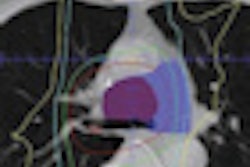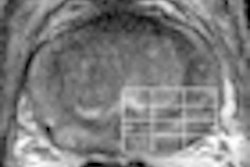What is the impact of radiation dose to the reproductive organs of children receiving radiotherapy (RT) treatments for cancer with respect to pregnancy outcomes? A new analysis of data from survivors of the Childhood Cancer Survivor Study (CCSS) published in the August 21 issue of Lancet provides some long-awaited answers.
An analysis of the outcomes of almost 5,000 pregnancies revealed that offspring of female cancer survivors who had their ovaries and/or uteruses exposed to radiation had a higher risk of being born stillborn or dying during the neonatal period compared to offspring whose mothers had no such radiation exposure (Lancet, Vol. 376:9741, pp. 624-630).
The risk was highest for offspring whose mothers received more than 10 Gy of radiation dose to reproductive organs, with a frequency of five deaths occurring for every 23 offspring. Offspring whose mothers received more than 2.5 Gy of radiation prior to menarche had a 12-fold risk of not surviving, compared to offspring of women who received this same radiation dose following menarche.
Principal investigator Lisa Signorello, ScD, of the International Epidemiology Institute in Rockville, MD, and colleagues quantified the chemotherapy and estimated radiation dose exposure to the testes, ovaries, uterus, and pituitary gland of 1,148 men and 1,547 women, and related these to the risk of an adverse birth. Gonadal shielding, oophoropexy, and field blocking of radiation dose were taken into account, and doses to the two ovaries were estimated separately.
Survivors enrolled in the CCSS received treatment for their cancers between January 1, 1970, and December 31, 1986. At the time of treatment, 37% were younger than age 10, approximately 30% were ages 10 to 15, and approximately 32% were 15 and older.
Out of 4,946 pregnancies, 93 cases (1.8%) of stillbirths and neonatal deaths were reported. The researchers identified that the percentage of stillbirths or neonatal deaths overall was 1.9% for survivors who had radiotherapy treatment.
The researchers could not directly determine whether uterine or oocyte damage was the cause of the association with stillbirth or neonatal death. They suggested that a uterine effect was more likely because high-dose pelvic irradiation can permanently impair growth and blood flow to the uterus, resulting in a reduced uterine volume.
While the study indicated that radiotherapy treatments to women during childhood have a role in the cause of late fetal death, there was no indication that radiation exposure to men as boys had any impact at all on their offspring, according to the researchers.
Related Reading
Moms postbirth bleeding tied to early radiation, March 18, 2010
Male infertility common among childhood cancer survivors, December 10, 2009
Childhood cancer survivors at risk for pregnancy complications, July 2, 2009
Ovarian failure relatively rare after childhood cancer, May 30, 2006
Copyright © 2010 AuntMinnie.com





_p888_f1_thumb.png?auto=format%2Ccompress&fit=crop&h=167&q=70&w=250)













